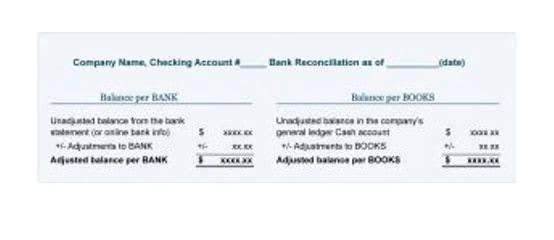
And if you have any injections of cash from outside sources, it needs to cash flow from financing activities be recorded just like outgoing cash. The better these details get maintained, the more accurate your accounting will be.
What Is a Cash Flow Statement (CFS)?

A positive number indicates that cash has come into the company, boosting its asset levels. A negative figure indicates that the company has paid out capital such as by retiring or paying off long-term debt or making a dividend payment to shareholders. Let’s assume that Mr. X has started a new business and has planned that he will prepare his financial statements like income statement, balance sheet, and cash-flow statement at the end of the month. Positive cash flow reveals that more cash is coming into the company than going out. This is a good sign as it tells that the company is able to pay off its debts and obligations.
What are the main components of a cash flow statement?
The positive CFF for consecutive years does not necessarily show the increase of assets. Instead, it suggests that the company has been relying on long-term debt continuously. Financial activity is any activity that involves the use of money or other financial instruments to generate profits. This can include things like investing in stocks, buying and selling property, or taking out loans. Gain a comprehensive understanding of 409A valuation in 2024 – its definition, importance, and applications. Stay current with the latest insights into how companies determine fair market value for their stock options.

How to Create a Cash Flow Analysis That Unveils Opportunities
It could be in the form of principal repayment, part-payment, or interest payment. Any outflow of cash related to repayment decreases the company’s cash reserves, and is therefore, recorded as a negative number (outflow) in cash flow from financing activities. It’s worth mentioning that cash flow from financing activities is just one part of the cash flow analysis. Alongside operating and investing activities, it presents a comprehensive view of how cash moves within a business.

Learning to master the art of negotiation is an essential part of doing business and could help you convince your suppliers to offer you a better deal. If a customer doesn’t want to pay you in cash, then be sure to conduct a credit check—especially before you sign them up. If the client has poor credit, you can safely assume that you won’t be receiving payments on time.
The separate disclosure of cash flows arising from financing activities is important because it is useful in predicting claims on future cash flows by providers of capital to the enterprise. As a business owner, how you manage your finances can have a huge impact—negative or positive—on your business’ success. Conducting a cash flow analysis and monitoring your income statement is the best way to gauge your business health and tell whether you’re barely Bookkeeping for Veterinarians making ends meet or flourishing. Key metrics like the operating cash flow margin and free cash flow also help assess profitability and predict future cash flows. Comparing these metrics against industry benchmarks can provide valuable insights into a company’s performance relative to its peers.
Determine the Reporting Period
- Businesses can use cash flow analysis to improve their investment decision-making by evaluating cash flow ratios, such as the free cash flow ratio, and conducting cash flow forecasting.
- For example, if a company has a plan to minimize its carbon footprint, the extra money can be used to purchase energy-efficient machinery or invest in renewable energy sources.
- Millions of companies use Square to take payments, manage staff, and conduct business in-store and online.
- The cash flow from financing activities (CFF) is part of a company’s cash flow statement.
- Combine the cash flows from operating, investing, and financing activities to determine the net change in cash during the period.
- When negative, it means that a company is spending more cash on its financing activities than it is generating.
Understanding and monitoring cash flow is also helpful for knowing where to make adjustments if there’s a financial problem. That number can give insights into how long your business can last during a rough patch or when it’s time to invest and grow if you’re generating excess cash. Financing activities are essential to keep an eye on because they can give insight into a business’s future growth prospects. If a company is consistently issuing new debt, it might be indicative of financial troubles down the road. Changes in cash from investing are usually considered cash-out items because cash is used to buy new equipment, income summary buildings, or short-term assets such as marketable securities.
- A cash flow statement is a significant financial statement of any business entity.
- Cash flow from financing activities involves all the cash that comes in and goes out relating to a company’s long-term debt, equity financing, and dividend payments.
- Large, mature companies with limited growth prospects often decide to maximize shareholder value by returning capital to investors in the form of dividends.
- Companies with healthy cash flow ratios and positive free cash flow are often considered more desirable investments, as they have the capacity to reinvest in growth, pay dividends, or reduce debt.
Cash Management
The cash flow statement is a vital financial document that provides an overview of a company’s cash inflows and outflows during a specific period. Financing activity in a cash flow statement focuses on how a firm raises capital and pays it back to investors through capital markets. This section of the cash flow statement measures the flow of cash between a firm and its owners and creditors.

Essentially, the business becomes a conduit for money borrowed from lenders to flow back out as repayments. In such a scenario, the company may not produce sufficient revenues or profits to cover its debt repayments, which leads to more borrowing and so the cycle continues. Similarly, when debt is repaid, a company uses its ‘cash and cash equivalents’ to clear its obligations, reducing the ‘long-term debt’ line under liabilities. This action, while reducing the company’s liquidity, also decreases its leverage and financial risk, potentially leading to a stronger balance sheet in the long-term. For instance, when a company pays dividends, it experiences a decrease in its ‘cash and cash equivalents’ under assets.
